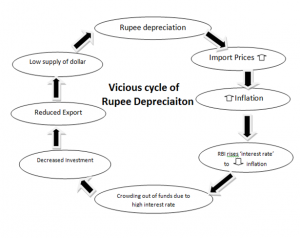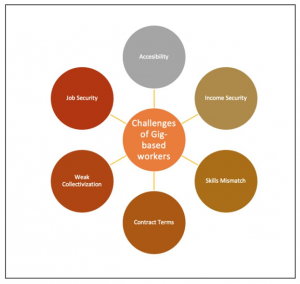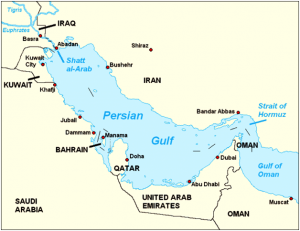TOPIC : THE NEW GEOPOLITICS OF ENERGY
THE CONTEXT: Earth has significant treasures(minerals) engulfed in its frame. These treasures have been driving mankind in the form of energy. The more energy resources, the better you are placed in the geopolitical hierarchy. No wonder, energy and geopolitics have always been closely linked. The twentieth century saw access to energy resources become a major factor in determining the winners of wars, oil producers banding together to create new global alliances, and price swings that spurred or deterred the adventurism of superpowers. The contemporary geopolitics of energy is analysed in the following article.
GEOPOLITICS & ENERGY: UNDERSTANDING THE INTERSECTION
Geopolitics is the battle for space and power played out in a geographical setting. Just as there are military geopolitics, diplomatic geopolitics and economic geopolitics, there is also energy geopolitics. Natural resources and the trade routes that bring those resources to consumers are central to the study of geography. The Geopolitics of Energy Project explores the intersection of energy, security, and international politics.
- RESOURCE CURSE: Coal-rich countries were the first to industrialize in the 1800s; the shift to oil from coal over the next century brought with it a rise in the strategic importance of the Middle East.
- Unfortunately, this resource abundance in the Middle East has resulted in myriad civil upsurges and militancy throughout the region.
- Since the second half of the 20th century, control of oil resources has played a central role in several wars, such as the Iran-Iraq War (1980-1988), the Gulf War (1990-1991), etc.
- ENERGY DRIVEN TRADE ROUTES: The geopolitics encircling the South China Sea serve as a good example of how even maritime routes which engulf rich energy resources within themselves play a crucial role in geopolitical developments. The assertion of sovereignty over disputed areas is the aim, and China has considered joint oil and gas exploration as an important policy tool in this pursuit.
- Southeast Asian states and prospective operators face considerable geopolitical risks due to China’s expansive territorial claims.
- CHANGING DYNAMICS OF ENERGY: The global concern for more than half a century, oil and natural gas have been at the heart of the geopolitics of energy. However, the over-dependence on oil & gas has brought the global issue of global warming to the forefront.
- Many important events like the Kyoto Protocol signing & Paris Agreement marked critical steps forward in global efforts to respond to the challenge of global warming.
- Thus, there is growing emphasis on the transition towards renewable energy.
- EMERGENCE OF NEW ALLIANCES: Meanwhile, technological advances have increased the competitiveness of solar and wind energy technologies, batteries and electric cars.
- The convergence of these two elements has started to reshape the global energy system. This can be seen in India establishing the International Solar Alliance.
- REPERCUSSIONS OF CONFLICTS: Ukraine-Russia war has disrupted the supply of natural gas and sanctions on Russia have changed the dynamics of oil exports from Russia.
CONTEMPORARY DEVELOPMENTS RELATED TO GEOPOLITICS OF ENERGY
STRATEGIC IMPORTANCE
REGION
THE MIDDLE EAST
- The Middle East and North Africa (MENA) region has about 57% of the world’s proven oil reserves and 41% of proven natural gas resources. MENA is also endowed with unique solar resources.
- Apart from the first oil shock of 1973, the Middle East region has faced several geopolitical conflicts like the oil crisis in the 1990s(Persian Gulf Crisis) followed by the recent Syrian crisis.
THE USA
- The United States uses and produces many different types and sources of energy, which can be grouped into general categories such as primary and secondary, renewable and nonrenewable, and fossil fuels.
- Primary energy sources include fossil fuels (petroleum, natural gas, and coal), nuclear energy, and renewable sources of energy. Electricity is a secondary energy source that is generated (produced) from primary energy sources.
RUSSIA
- Russia is rich not only in oil, gas and coal but also in wind, hydro, geothermal, biomass and solar energy, the resources of renewable energy. However, fossil fuels dominate Russia’s current energy mix, while its abundant and diverse renewable energy resources play little role.
- In 2021, Russian crude and condensate output reached 10.5 million barrels per day (BPD), making up 14% of the world’s total supply.
- Russia has a wide-reaching gas export pipeline network, both via transit routes through Belarus and Ukraine, and via pipelines sending gas directly into Europe. Russia’s natural gas accounted for 45% of imports and almost 40% of European Union gas demand in 2021.
SOUTH CHINA SEA
- The South China Sea is an arm of the western Pacific Ocean in Southeast Asia. It is south of China, east & south of Vietnam, west of the Philippines and north of the island of Borneo.
- This sea holds tremendous strategic importance for its location as it is the connecting link between the Indian Ocean and the Pacific Ocean (Strait of Malacca).
- According to the United Nations Conference on Trade And Development (UNCTAD), one-third of the global shipping passes through it, carrying trillions of trade which makes it a significant geopolitical water body.
- The U.S. Energy Information Agency estimates that the South China Sea holds about 190 trillion cubic feet of natural gas and 11 billion barrels of oil in proved and probable reserves, most of which lie along the margins of the South China Sea rather than under disputed islets and reefs.
CONTEMPORARY DEVELOPMENTS
REGION
THE MIDDLE EAST
- The Indo-Pacific region will become increasingly reliant on the Middle East for its oil: By 2030, 80 per cent of China’s oil will come from the Middle East, and 90 per cent in the case of India. (Japan and South Korea remain 100 per cent dependent on oil imports.)
- China’s reliance on the Middle East will be buttressed by its concomitant and growing dependence on former Soviet Central Asia for energy.
- OPEC is largely a result of Geopolitical developments in the Middle East. The member nations collectively influence the quantity of oil produced. For example, the post-pandemic slowdown pushed OPEC nations to reduce oil production.
THE USA
- The United States is emerging as a global energy-producing giant in its own right. U.S. shale oil production will more than triple between 2010 and 2020.
- Shale gas has risen from 2 per cent to 37 percent of U.S. natural gas production. The United States has now overtaken Russia as the world’s biggest natural gas producer.
- Some estimates put the United States as overtaking Saudi Arabia as the world’s largest oil producer by the end of the current decade
- When combined with Canadian oil sands and Brazil’s oil lying beneath salt beds, these shifts have the potential to make the Americas into the “new Middle East” of the 21st century
RUSSIA
- Russia is increasingly shifting its focus of energy exports to East Asia. China is on track to perhaps become Russia’s biggest export market for oil before the end of the decade, even as Russian energy firms are now developing a closer relationship with Japan in order to hedge against their growing emphasis on China.
- Repercussions of conflicts: Russia’s assault on Ukraine has roiled global energy markets and turned the climate policy conversation upside down.
- In Europe, disrupted gas exports from Russia, the world’s second-largest producer, threaten economic activity and the ability of people to heat their homes. This threat to energy security has kicked off a flurry of responses, including U.S. efforts to help expand and diversify the region’s liquefied natural gas (LNG) supply.
SOUTH CHINA SEA
- China lays claim to nearly all of the South China Sea, including the Paracel Islands.
- However, Taiwan, the Philippines, Brunei, Malaysia and Vietnam also claim parts of the region, believed to hold valuable oil and gas deposits.
- Since 2010, China has been converting uninhabited islets into artificial islets to bring them under UNCLOS (examples would include Haven Reef, Johnson South Reef and Fiery Cross Reef).
- China has been changing the size and structure of the reefs by modifying their physical land features. It has also established airstrips on Paracel and Spratly.
INDIA’S STAND ON GEOPOLITICS OF ENERGY
India imports about 85% of the oil it needs. Thus, a spike in the price of oil makes a big difference not just to domestic cost conditions but also to the balance of payments.
INDIA’S APPROACH
REGION/ISSUE
US SANCTIONS ON IRAN
- India has invested in the Chabahar port in Iran and highways that provide an alternative route to both Afghanistan and Central Asia, bypassing Pakistan, thereby making Iran important for the long-term interests of India.
- Following the US imposing sanctions on Iran, in 2018, India had to look for alternatives for its imports. India was a second-biggest buyer of Iranian oil after China before sanctions halted supplies in May 2019.
- India has invested more in its relationship with Saudi Arabia and other anti-Iranian Gulf monarchies. Such improvement in relationships will put pressure on India to moderate its support for Iran. No wonder, in 2020-21, Iraq was India’s biggest oil supplier, followed by Saudi Arabia and the UAE.
SOUTH CHINA SEA
- India has maintained that it is not a party to the SCS dispute and its presence in the SCS is not to contain China but to secure its own economic interests, especially that of its energy security needs.
- As a key element of the Act East Policy, India has started internationalizing disputes in the Indo-Pacific region to oppose China’s threatening tactics in SCS.
- Also, India is part of the Quad initiative (India, US, Japan, Australia) and the lynchpin of the Indo-Pacific narrative. These initiatives are viewed as a containment strategy by China.
- State oil group Petrovietnam and the overseas unit of state explorer Oil & Natural Gas Corp (ONGC) have signed a memorandum on joint exploration of crude oil in Vietnam’s Exclusive Economic Zone.
RUSSIA-UKRAINE CONFLICT
- India is exploring alternative payment channels for trade with Russia and the possibility of sourcing additional oil at a discount, even as the Western countries led by the USA reduce its exposure to Russian oil.
- In order to shield the economy from the negative impact of the recent surge in crude oil prices, India is exploring the possibility of importing additional oil at discounted rates from Russia, which is facing sanctions and global backlash due to the Ukraine conflict. On the back of rising crude oil purchases, India’s bill for imports from sanctions-hit Russia jumped 3.5 times in a year in April to $2.3 billion.
- India’s stand of trading for comparatively cheaper Russian oil has created an element of doubt in the west. Despite pressure from Western nations, India did not pick a side and it chose to maintain a neutral stance considering its historical relationship with Russia.
THE CONCLUSION: India is a sovereign nation and not a client state of any great power. Thus, vouching for its own interests is right in every sense. Like any other country, India also retains the right to take policies based on pragmatic realism and its core national interests. And India thinks that a neutral position anchored in strategic autonomy which keeps channels open with both sides is what serves its interests. Decisions made about energy today will influence what the world looks like tomorrow, just as the political and security events of today, be it the Arab Spring or the devastating earthquake and tsunami in Japan will shape energy realities. Thus, global geopolitics must be driven by values like inclusivity and sustainable energy resources so as to avoid conflicts and struggles for energy.
QUESTIONS TO PONDER
- Illustrate with suitable examples the interplay between Geopolitics and Energy security.
- Examine how changes in global geopolitics influence the energy security of India. Is India’s response to these geopolitical developments appropriate? Give your views.
- “There is no higher interest than national interest.” Comment with reference to contemporary geopolitics of energy.
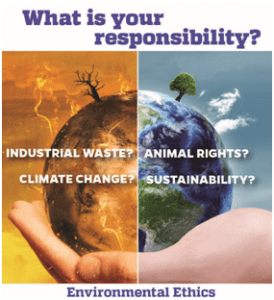
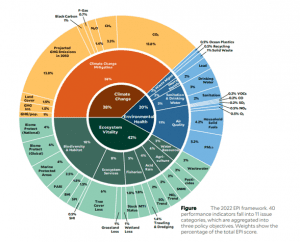
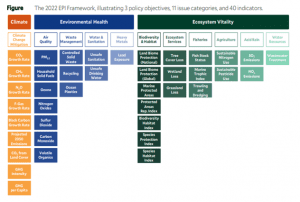

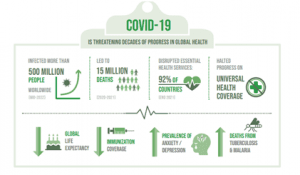
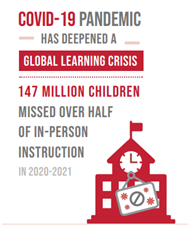
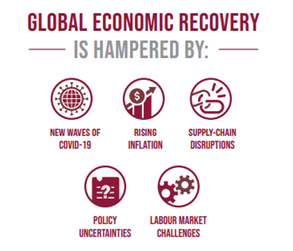

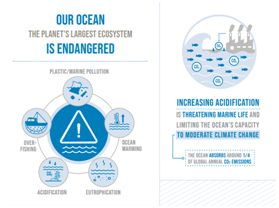
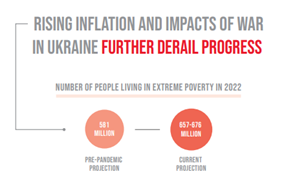
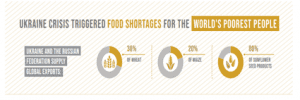

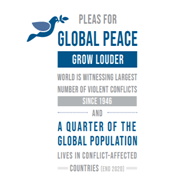
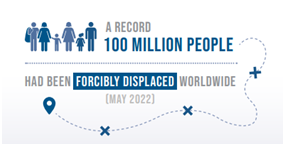

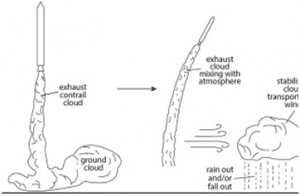 atmosphere. These soot particles have a far larger impact on the climate than all other sources of soot combined, as BC particles are almost 500 times more efficient at retaining heat.
atmosphere. These soot particles have a far larger impact on the climate than all other sources of soot combined, as BC particles are almost 500 times more efficient at retaining heat. world economy.
world economy.





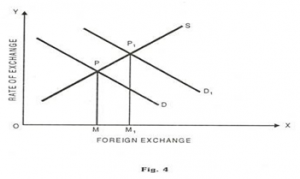 foreign money and not exclusively the function of prices obtained between two countries.
foreign money and not exclusively the function of prices obtained between two countries.